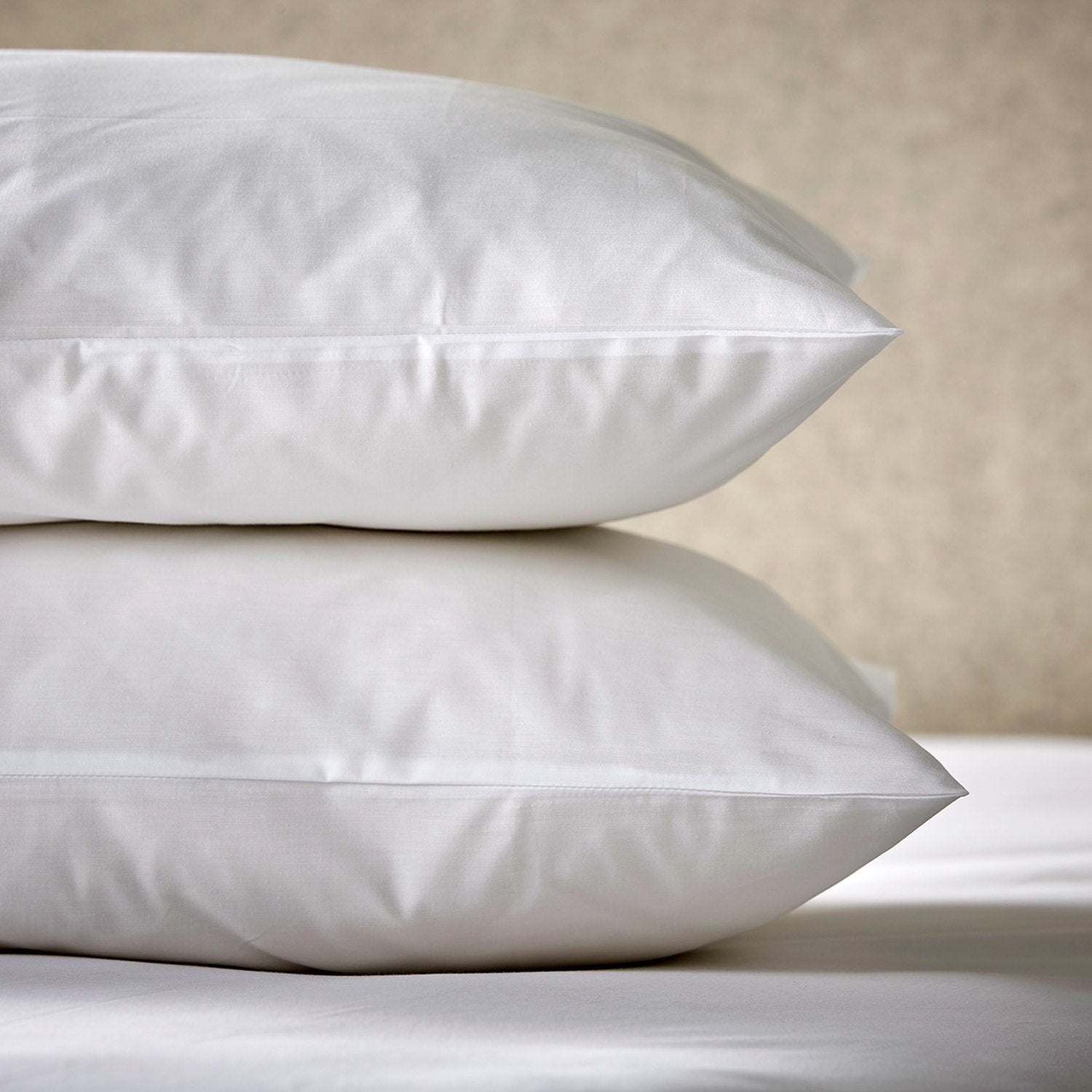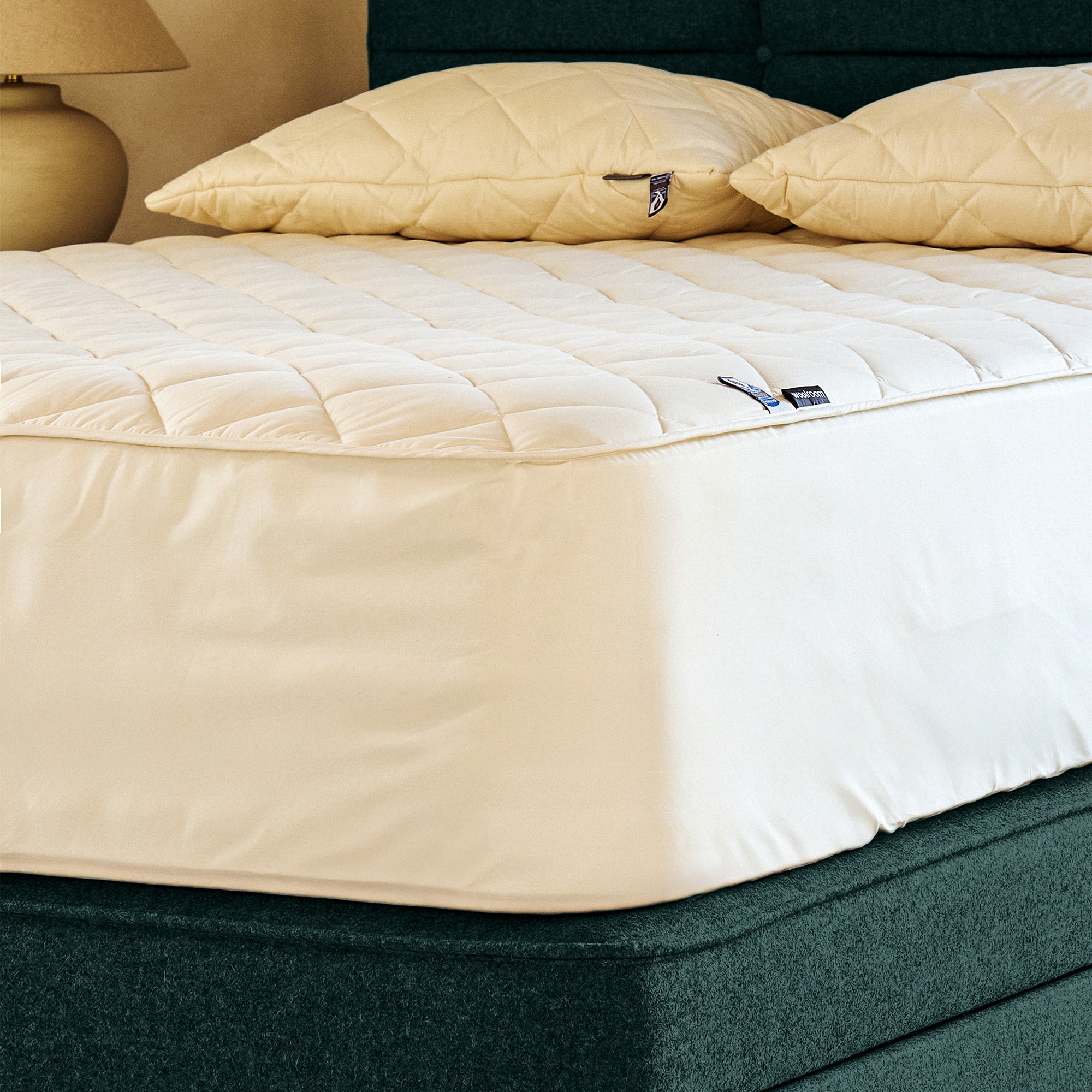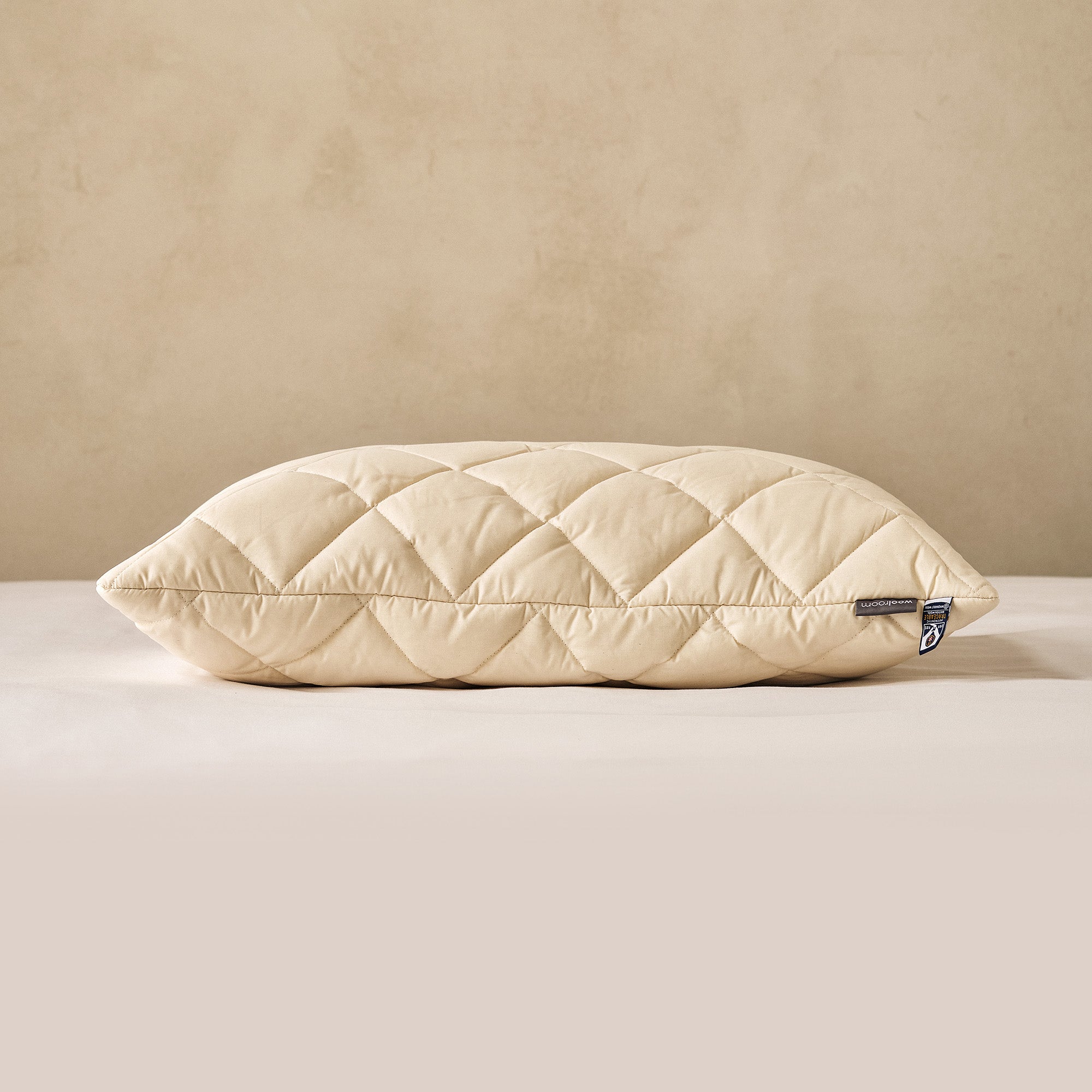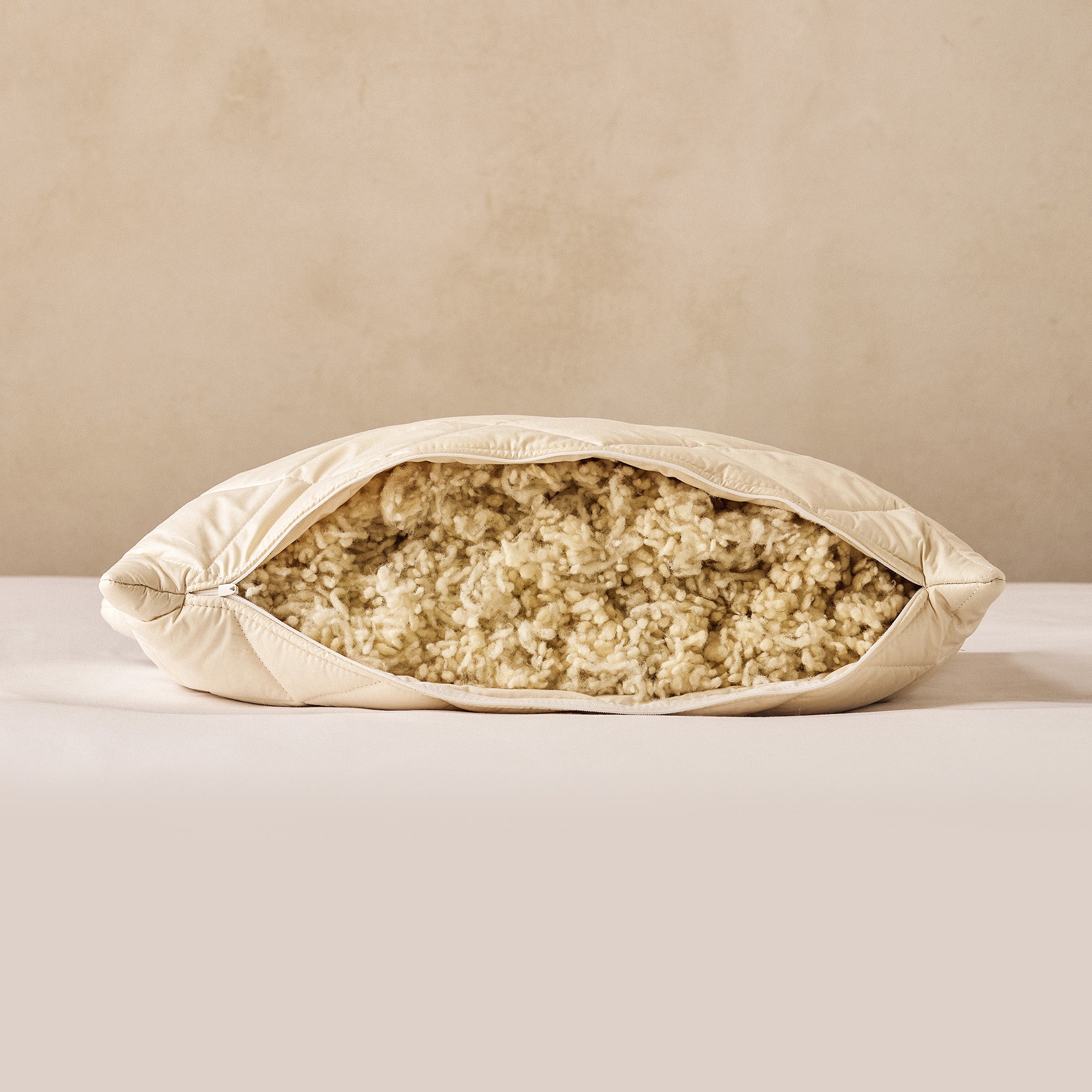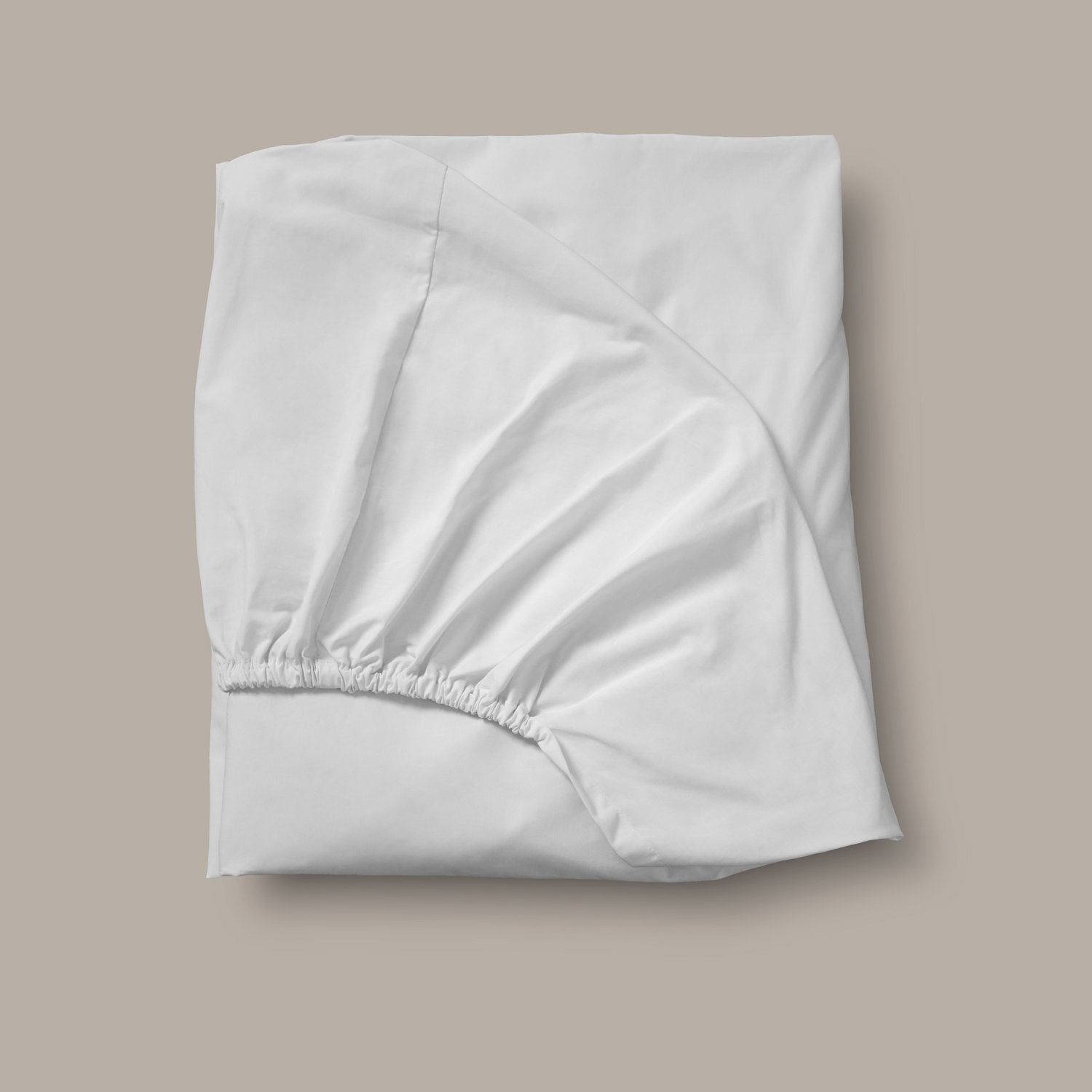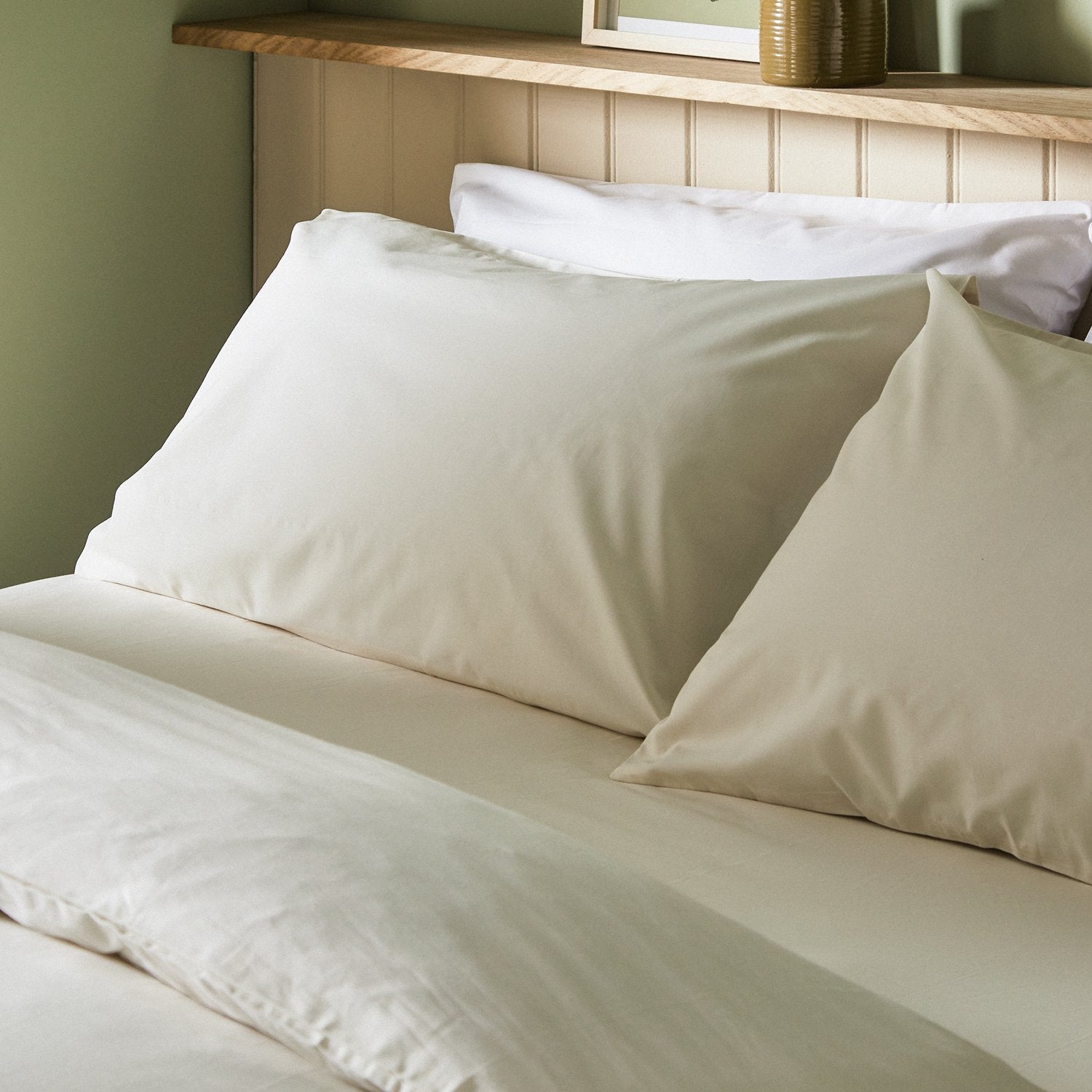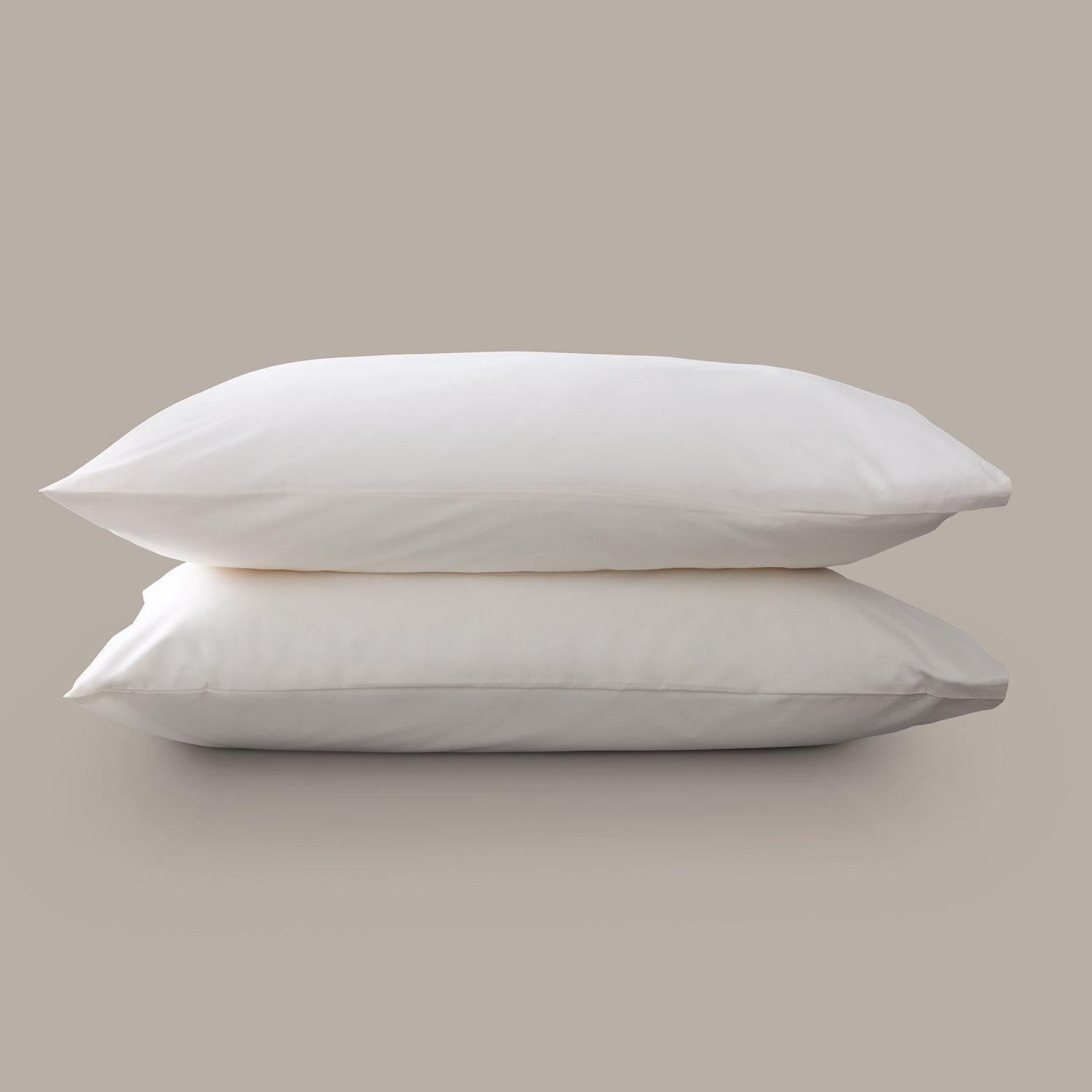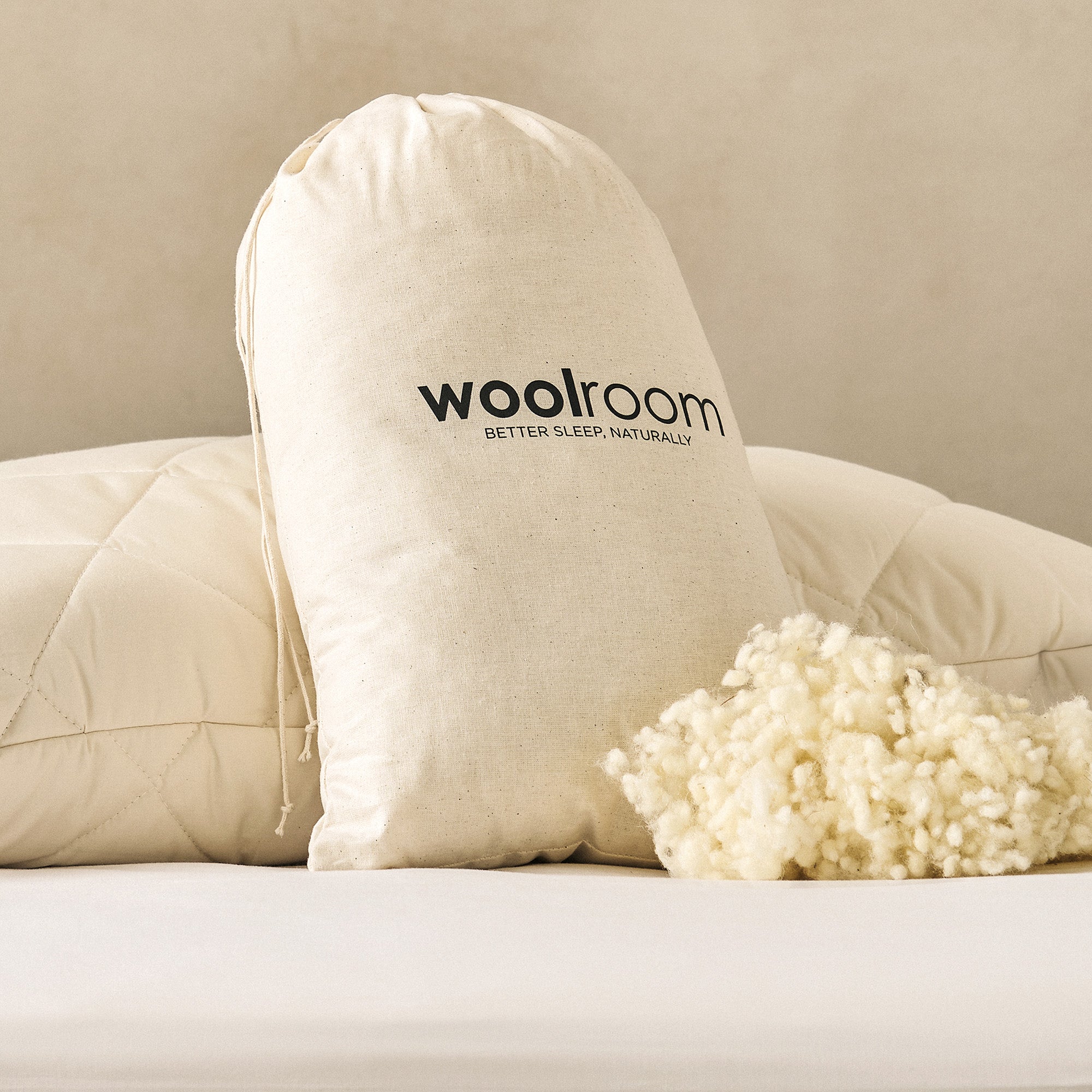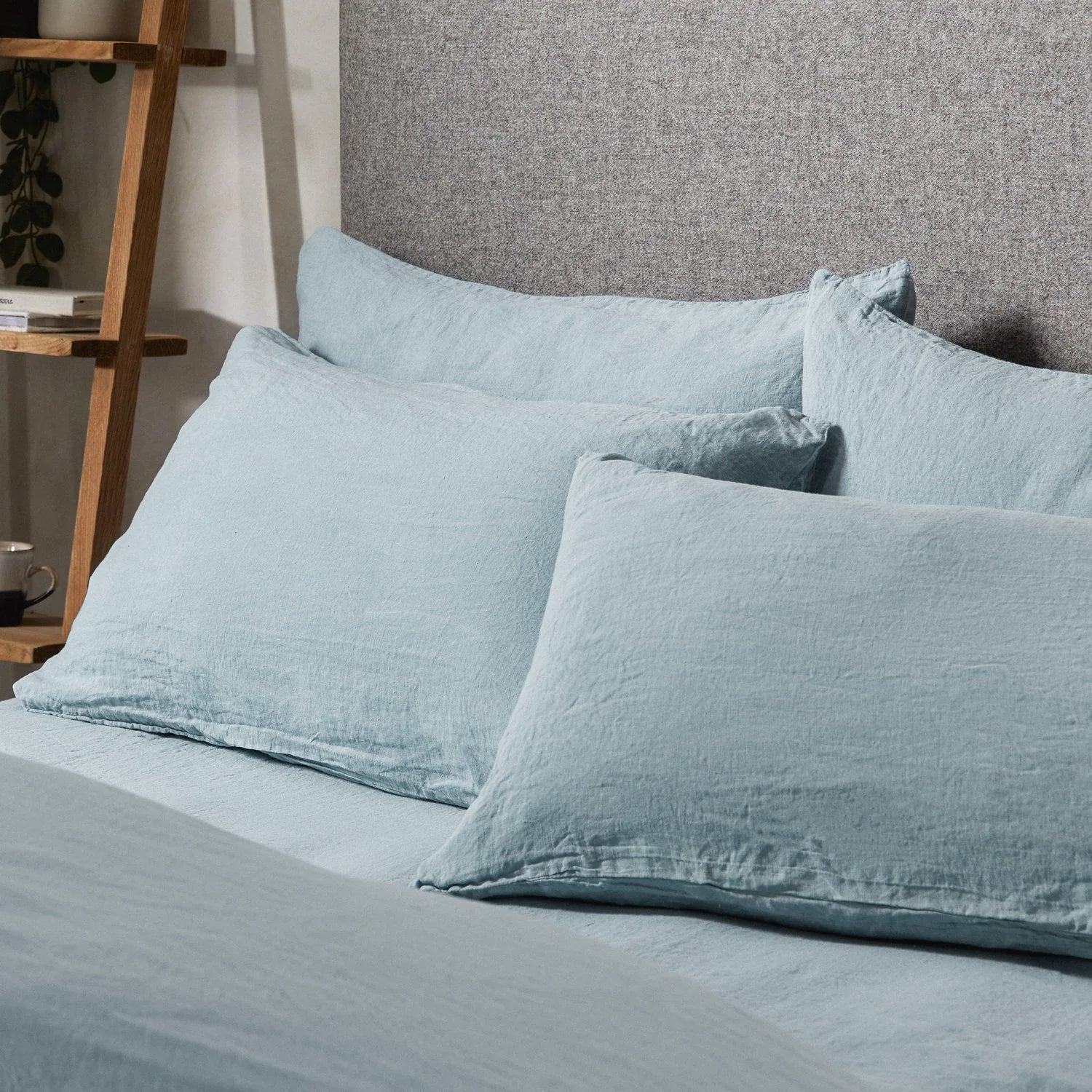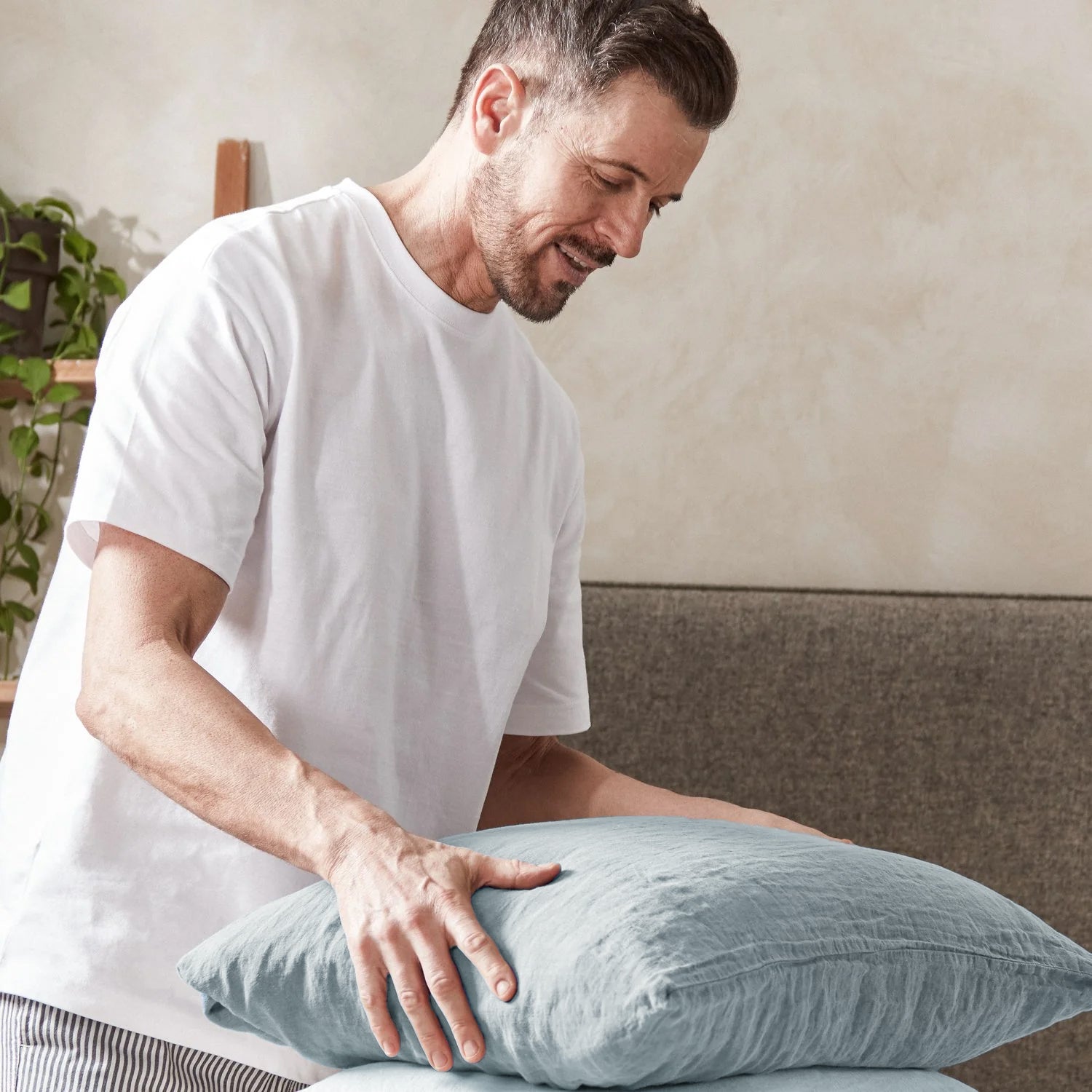Some people are hot sleepers, and if you fall into this category, you know how difficult it can be to get a good night’s rest. Cold sleepers have a similar problem, unable to reach the perfect temperature while sleeping.
If you’re having a hard time sleeping because your body temperature is too high or low, wool has naturally temperature-regulating benefits that make it the perfect fiber for bedding. Wool comes naturally off the back of sheep with the ability to do the same - keep you warm when it's cold, and cool when it's warm.
Because it is a natural fiber and not a synthetic material, wool promotes airflow and breathability. This adapting to temperature fluctuations creates a temp-regulating environment in the bedding. Which can enhance sleep quality and comfort year-round. Below, we’ll discuss more about sleep temperature regulation and how certain bedding materials can help.
Wool keeps you cool and boosts regenerative sleep by 25%.

Key Features of Temperature-Regulating Bedding

What Is Temperature-Regulating Bedding?
If you’re wondering how to regulate your body temperature while sleeping, this type of bedding is for you. Temperature-regulating bedding refers to several products that help maintain a comfortable and consistent sleep temperature throughout the night. These products respond to changes in your body heat and room temperature and keep you from getting too hot or cold.
Thermoregulation bedding can include temperature-regulating duvets, sheets, mattress pads, pillowcases, and even specialized mattresses or mattress toppers. The materials in these products are carefully chosen to better regulate temperature than traditional bedding materials.
The bedding materials used for regulating body temperature at night include:
- Breathable fabrics. Materials like wool are naturally very breathable and allow for air to circulate while you sleep. This prevents the buildup of heat and moisture.
- Moisture-wicking technologies. Many temperature-regulating blankets and bedding materials have moisture-wicking abilities that draw moisture away from your body to keep you dry and comfortable.
- Cooling gels or fibers. Some bedding products include cooling gels or fibers that absorb body heat for a refreshing and cooling effect.
The primary goal of temperature-regulating bedding is to create a sleep environment that’s not too hot or cold so you can sleep comfortably and wake up refreshed.
How Do Temperature-Regulating Bedding Materials Work?
Temperature-regulating bedding uses materials that respond to changes in your body and bedroom temperature. Common breathable materials include bamboo, specialized polyesters, and wool. However, wool is the best choice if you have frequent body temperature regulation problems at night. This completely natural material has been keeping people comfortable for centuries thanks to its incredible ability to insulate and regulate temperature.
Wool has a crimped fiber structure that creates several microscopic pockets that trap air and allow the fabric to breathe and adjust to your body’s changing temperature needs. When you’re too warm, wool wicks away moisture and releases excess heat. When you’re too cold, those same insulating abilities help retain body heat. No other bedding material can match wool’s incredible dual ability to both cool and warm as needed.
What Makes Wool Best at Sleep Temperature Regulation?
While bamboo and polyester bedding may claim moisture-wicking and breathability, their one-dimensional fibers can’t compete with wool’s temperature-regulating abilities. Only wool can sense your body’s needs and respond accordingly — cooling you when you’re too warm and warming you up when you’re cold. It’s also naturally hypoallergenic, preventing a build-up of allergens that can interrupt sleep. Wool is the best choice for year-round comfort.

Our Temperature-Regulating Bedding — Put to The Test
The scientists at Leeds University, UK, teamed up with the bedding experts at Woolroom to see if wool could be the secret to better sleep. Since your body temperature can rise when you sleep, they wanted to see how wool compared to other materials in terms of thermoregulation. They tested different duvet fillings, including wool, polyester, and feather/down. Using a Sweating Guarded Hot Plate, they simulated sleeping conditions to see how each material handled heat and moisture over an eight-hour period. The samples were tested in both cooling down from hot temperatures and warming up to typical bedroom temperatures with medium humidity.
The results showed that wool was much better at managing built-up sweat and moisture. Wool allowed 67% more of the moisture to escape compared to feather/down duvets and 43% more than polyester. In the thermal tests, wool reached the ideal sleeping temperature of 35.1°C much quicker than the other materials and maintained it throughout the night.
By simulating real human conditions like sweating, the Sweating Guarded Hot Plate showed wool’s superior ability to absorb and release moisture over the entire eight-hour stretch. This consistent temperature control is thanks to wool’s unique crimped fiber structure. No matter if sleep conditions get too hot or cold, this study proved that wool bedding creates the perfect, dry, cozy environment for better sleep.

People sleep worse in room conditions below 60°F and above 77°F.
Customer Reviews
Woolroom offers temperature-regulating duvets, blankets, and other bedding to help you get the rest you deserve. Check out these reviews to learn more about why customers love our natural wool bedding!
Better Sleep or Your Money Back
We know that investing in better sleep can be overwhelming, so we want to make sure you’re satisfied with your purchase. To do this, we offer a sleep trial for all of our products that begin from the date of delivery. Our 30-night sleep trial is good for individual items like pillows, duvets, and mattress pads, and our 60-night trial is good for our bedding bundles. We also offer a money-back guarantee and free returns if you’re not completely satisfied with our temperature-regulating bedding. Learn more about our sleep trials here.


